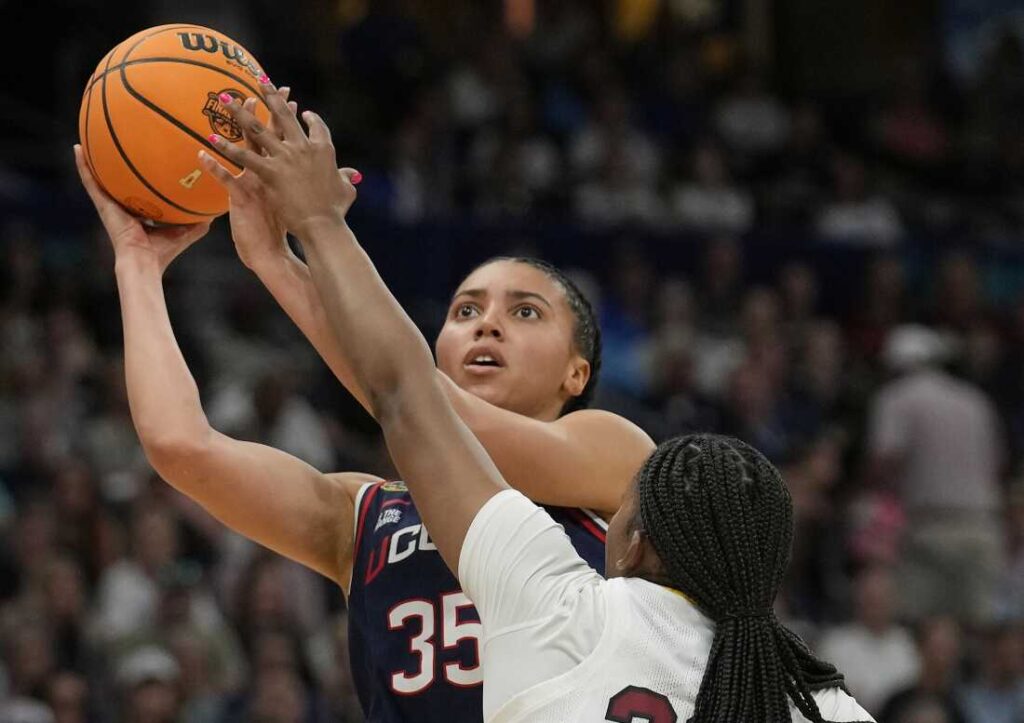On April 15, 1947, Jackie Robinson broke Major League Baseball’s color barrier when he made his major league debut for the Dodgers. This created a ripple effect that led to the civil rights movement, the women’s rights movement, and Title IX. Almost 78 years later, it is now common knowledge that separate is inherently unequal when it comes to sports.
And yet, men and women continue to have separate leagues in college sports.
When I was in high school, I was the PA announcer for the wrestling team, a team comprised of boys and girls who competed against each other based on weight, not gender. It made sense to me.
Similarly, last year, Audrey Jimenez won the state boys’ wrestling championship for her weight class, making history as the first girl to do so in Arizona. She had to appeal to be allowed to compete against the boys.
I can see a future where all NCAA sports are mixed-gender.
Although recent political moves have likely created a setback for mixed-gender sports, there are plenty of arguments to support a movement in the direction of co-ed sports.
Co-ed sports can help foster inclusion and challenge traditional gender roles, allowing non-binary student-athletes to play on teams without having to choose a gender that they aren’t. A 2023 New York Times article showed that many high school students supported making all sports co-ed. One of the arguments challenged the claim that separate-gender sports makes competition fair and safe, pointing out that height and weight give competitors specific advantages, not necessarily gender. With co-ed sports, athletes can be selected based on size and skill rather than arbitrary gender.
Focusing away from gender and toward skills, creating a team with athletes of different genders helps widen perspectives, creating a more effective and dynamic team. For instance, the Canyon Athletic Association in Arizona argues that “every athlete has their own individual skill set and talent that they bring to a team.” The argument goes on to say that female players may have more stamina and male players may have more muscle mass, but each is a necessary part of the team. Additionally, co-ed sports encourage mutual respect between genders because each player has the chance to see what every other player brings to the team.
Furthermore, co-ed sports can help smaller schools field a team. For instance, if a school didn’t have enough players for a single-gender sport, by making that sport co-ed, that school would be able to compete against other colleges on a national level.
Finally, an argument that I feel strongly about is that mixed-gender sports can help eliminate the stereotype that males are inherently stronger or better than females at sports. We see this stereotype used to justify keeping trans women out of women’s sports. By integrating sports, the issue of whether someone is transgender or not becomes irrelevant.
The arguments against co-ed sports remain entrenched in the concept that men are physically better than women. For instance, concerns about unfairness or safety assume that men are stronger and women are more susceptible to injuries when competing against men. I think we need to move away from gender stereotypes when making arguments about fairness and safety. After all, if teams are built on the basis of skill and ability, gender no longer remains relevant.
I would argue that there is more diversity within the sexes than there is between them. For example, men come in all sizes and strengths, as do women. Are we really okay with categorizing all men the same and all women the same? By separating athletes based on size and skill, it logically leads to fairer and safer competition.
For those who argue against co-ed sports, there are some legitimate concerns. Revenue-generating sports like football and basketball could reduce funding for women’s athletics. There are also concerns about Title IX. I don’t have an answer to address those issues, but I do believe that using Title IX and unequal revenue as an excuse for not considering mixed-gender sports will leave us bogged down in the argument rather than seeking a solution.
More and more young people today are rejecting the gender binary and embracing the idea that gender is a spectrum. This is not a fact that can be ignored.
The NCAA will have to face this fact and find a way to allow all students to participate in sports that embrace them as a person, not a gender.


